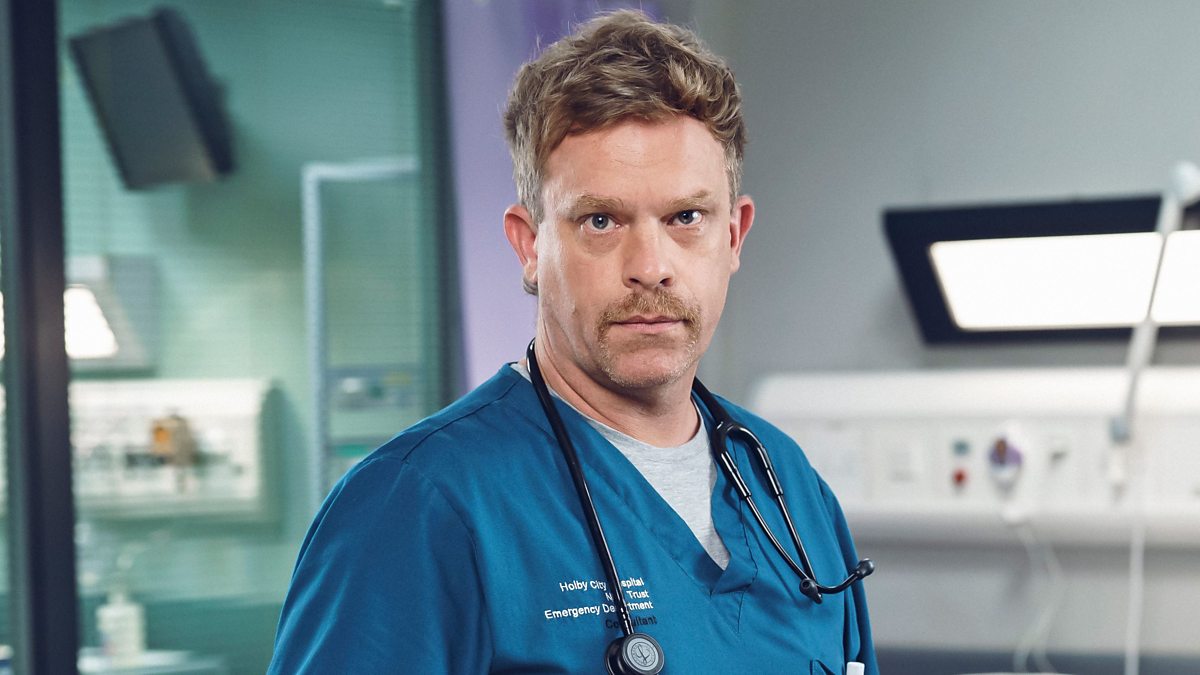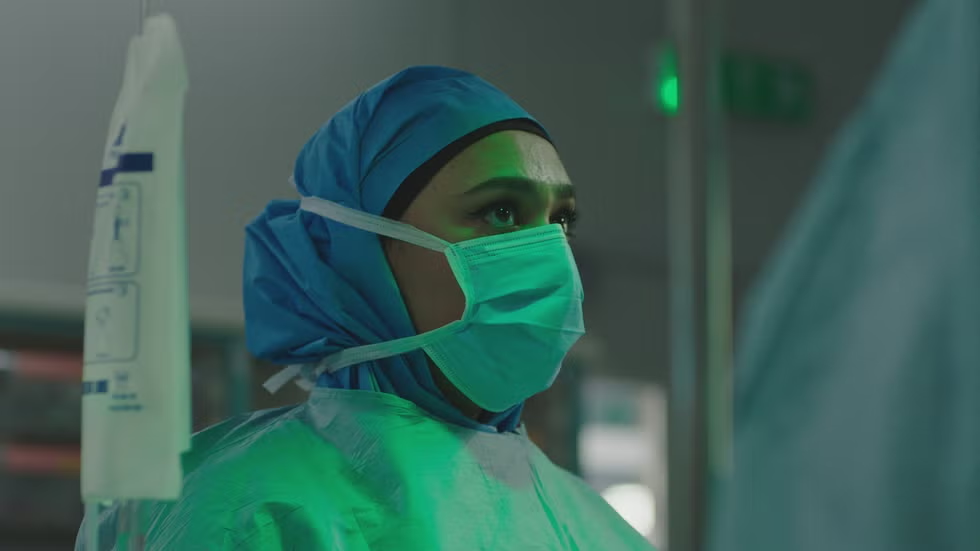In this week’s high-stakes episode of Casualty, titled “Red Flags,” the normally composed Dr. Dylan Keogh is pushed to his emotional and physical limits after a brutal encounter with a dangerous fugitive inside the hospital. This gripping installment offers a harrowing look at how trauma can ripple through even the most seasoned professionals—and how unresolved pain can surface at the worst possible moments.
Ray McKenna’s Return Sparks Chaos
The chaos begins when word spreads that Ray McKenna, the violent offender who attacked Ryan Firth months ago, has escaped custody during a compassionate release for his mother’s funeral. Police warn Holby ED that he may be headed their way, seeking revenge against those he blames for his mother’s death—particularly Stevie Nash.
While hospital security is quietly tightened, tension brews just beneath the surface. Dylan, Stevie, and the rest of the team do their best to carry on, treating patients and keeping the department running, but there’s a tangible fear in the air. Dylan, though always emotionally guarded, is more on edge than usual, scanning every corridor, every shadow.
Dylan Is Ambushed
The unthinkable happens when Dylan encounters Ray inside the hospital—far too close to vulnerable patients and staff. In a sudden, unprovoked assault, Ray physically attacks Dylan, who tries to de-escalate the situation without further provoking his assailant. It’s clear that Ray is spiraling, acting on grief and rage, with no regard for the consequences. Dylan suffers a brutal blow to the head and is left concussed and dazed, as Ray slips away, continuing his search for Stevie.
This moment is shocking not just because of the violence, but because it happens to Dylan—the man who always seems untouchable, composed, and emotionally invincible. But here, we see Dylan in a rare moment of vulnerability. For once, he isn’t the one holding the calm center. He’s the one bleeding, shaken, and unsure.
The Aftermath and Emotional Fallout
While Dylan is quickly treated for his injuries, the real damage is emotional. In the aftermath, he’s withdrawn, quiet. Even Jodie and Rash, usually able to draw him out, struggle to get more than clipped answers. He waves off concern, claiming he’s “fine”—but the audience sees the cracks.
This isn’t just about the attack itself; it dredges up unresolved trauma from Dylan’s past, including his own history with alcoholism and self-destruction. The violence and loss of control act as a trigger, bringing back memories he’s long tried to bury. For a man who prides himself on rationality and precision, being physically and emotionally vulnerable is terrifying.
The writers cleverly draw a line between Dylan’s emotional detachment and the incident. Throughout the episode, we see him try to return to normalcy, treating patients like the consummate professional. But there’s a numbness to him—he’s not fully present. The smile doesn’t quite reach his eyes.
Stevie’s Brush with Death
As Dylan processes the assault, Stevie is cornered by Ray in a bathroom—a scene filled with terrifying suspense. Alone and unarmed, Stevie manages to stay composed and tries to talk Ray down. It’s a chilling scene that underscores how violence can erupt in any space, even a hospital intended for healing.
Stevie is eventually rescued, but not before the trauma of the day leaves a lasting mark. She and Dylan share a poignant scene afterward, both battered in different ways, trying to make sense of what they’ve endured.
Themes of Trauma, Guilt, and Silent Battles
What makes “Red Flags” such a standout is its raw portrayal of trauma—not just as a physical experience, but as a lingering, invisible wound. Dylan’s injury is quickly patched up, but his psyche isn’t so easily healed. The show reminds us that those who save others every day often carry silent burdens of their own.
In a subtle but powerful moment at the episode’s end, Dylan sits alone in the staff room, staring at a blood-stained shirt in a plastic bag. He doesn’t speak. He doesn’t cry. But his silence says everything.
Conclusion
“Red Flags” is more than just a thrilling hour of television. It’s a character study in resilience, vulnerability, and the high personal cost of working in emergency medicine. Dylan Keogh, long seen as the rock of Holby ED, is cracked open here—and the glimpse inside is devastating, honest, and deeply human.





